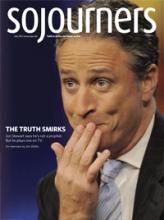Before I met a refugee family from Burma, I was mostly unaware of the southeast Asian country. For a year of Sunday afternoons, I taught this family English, took them to the library, and helped them apply for green cards; they taught me courage, hope, resilience—and the story the newspaper headlines hadn’t.
All four children were born in a Thai refugee camp, where the parents had lived the better part of their lives, nearly 20 years. One afternoon they slipped a video into their church-donated VCR and implored me to watch with them. “This Pop’s village,” the oldest girl told me as a lazy river lined with men fishing and women chatting appeared on the TV. Then her face grew serious. “We can’t live there again,” she said.
I drove home wondering: How many other stories haven’t I heard? And how do we learn of, and engage with, the places and stories outside the media’s eye?
The media has blind spots, and they threaten to become our own. The 24-hour news cycle loves novelty; it has room for short-lived cyclones and monk-led protests, but not decades of continuous oppression and ethnic cleansing. There’s also the matter of access. Countries embroiled in human rights abuses are hard, sometimes even impossible, for reporters to get into. North Korea is currently detaining, and plans a June trial for, two U.S. journalists who were covering the plight of refugees along the Chinese border. When and if the media gains access, it often must trade full disclosure to do so; the information that passes censorship can wind up being lukewarm pseudo-truth.
Read the Full Article
